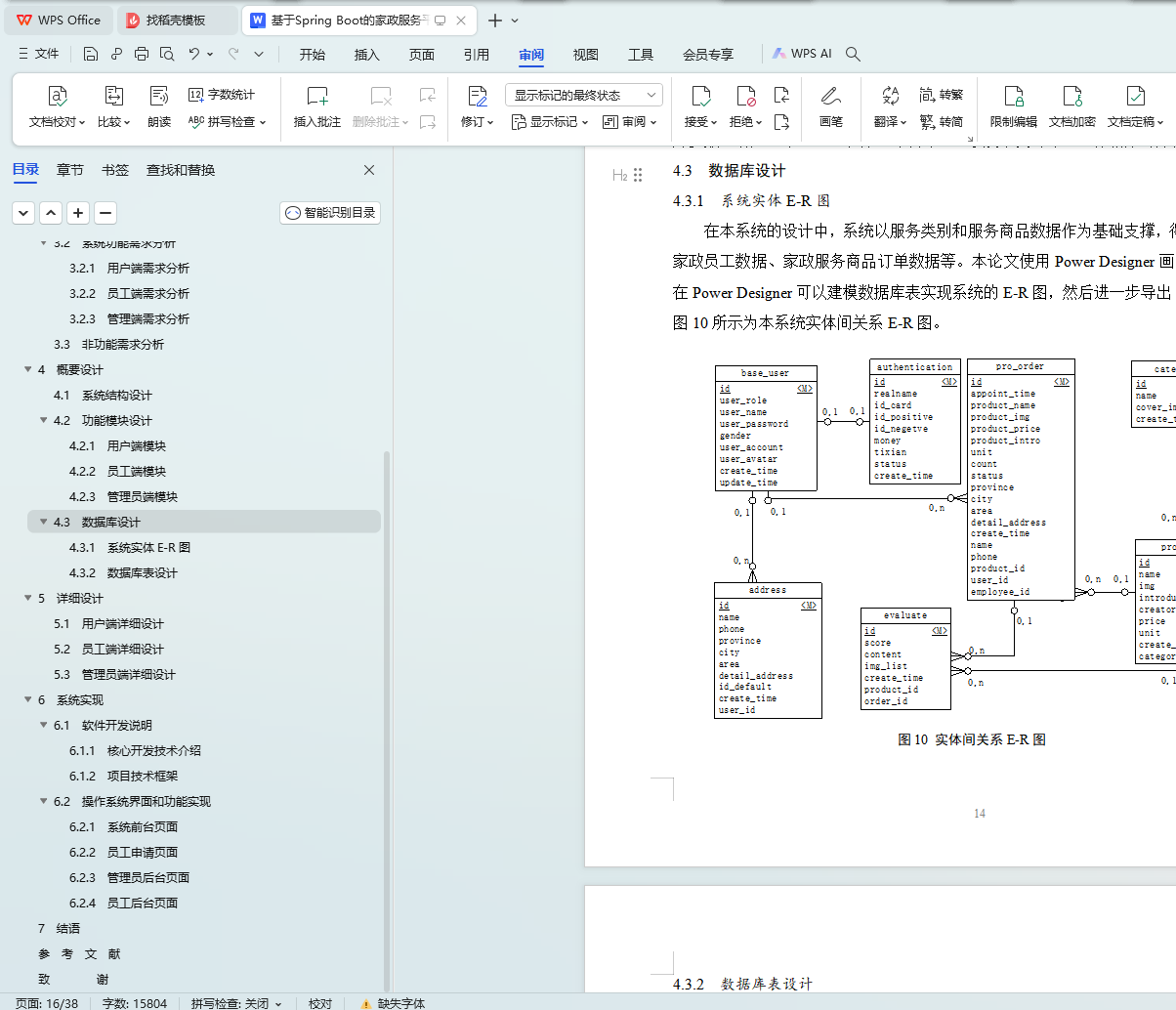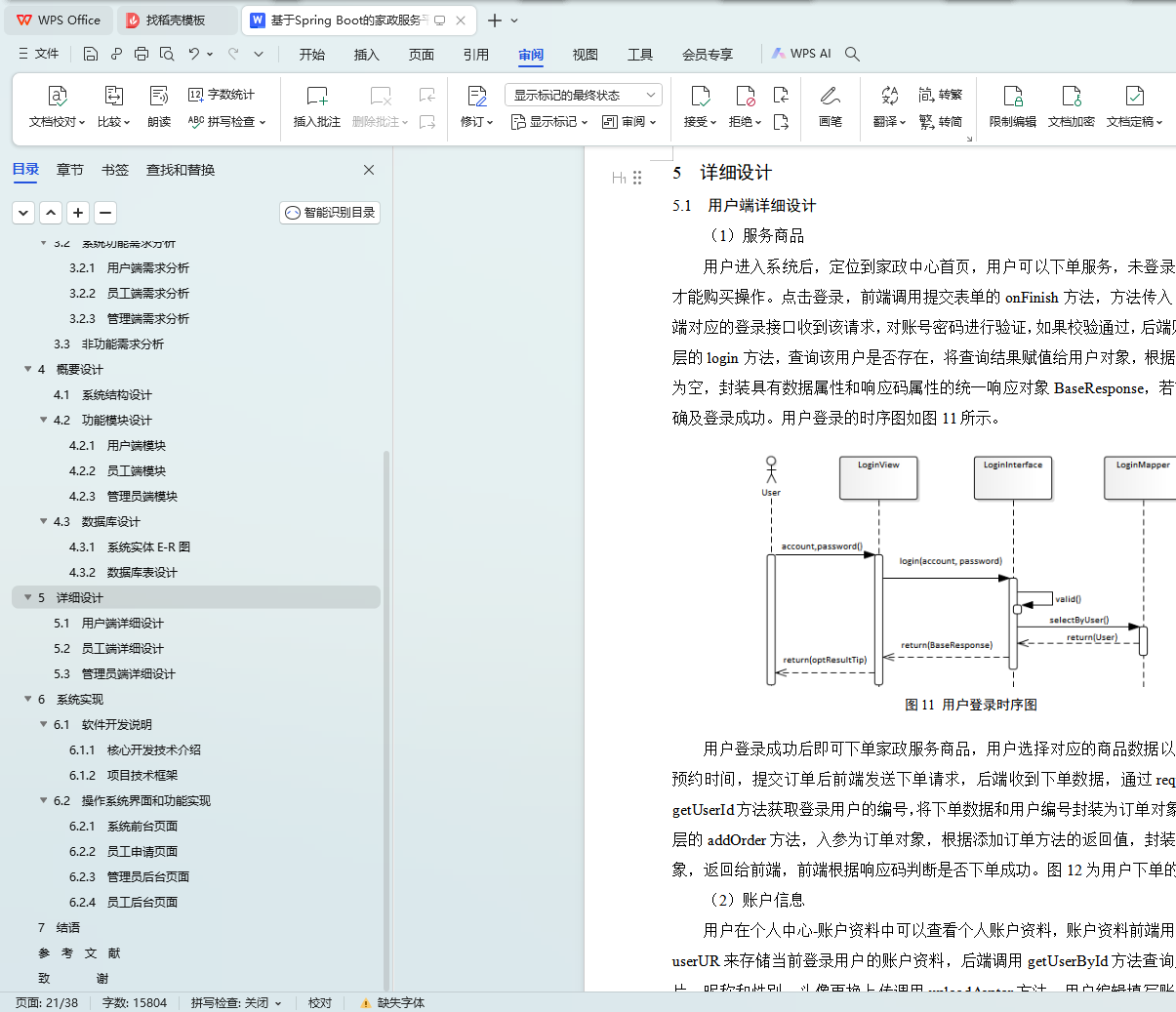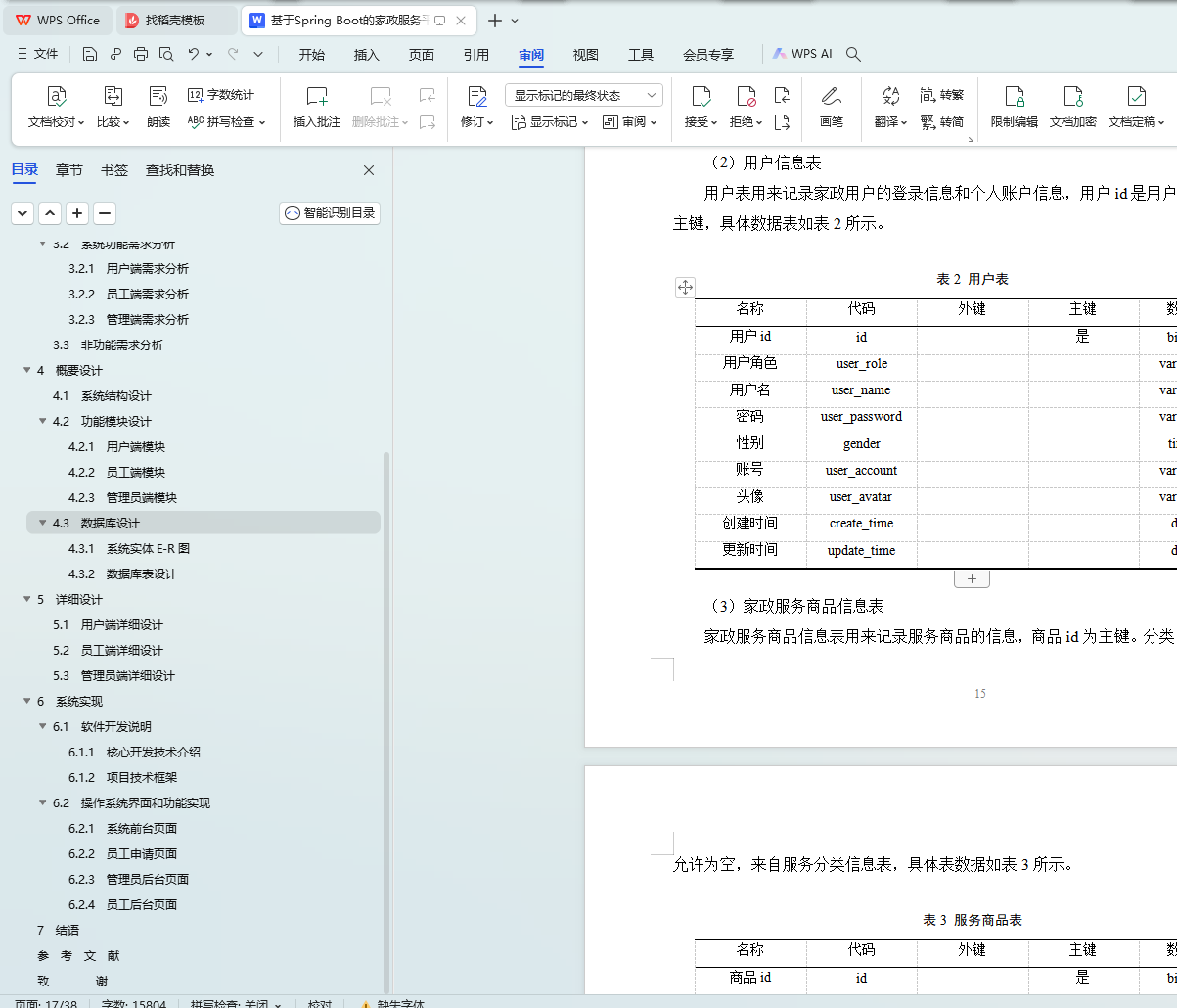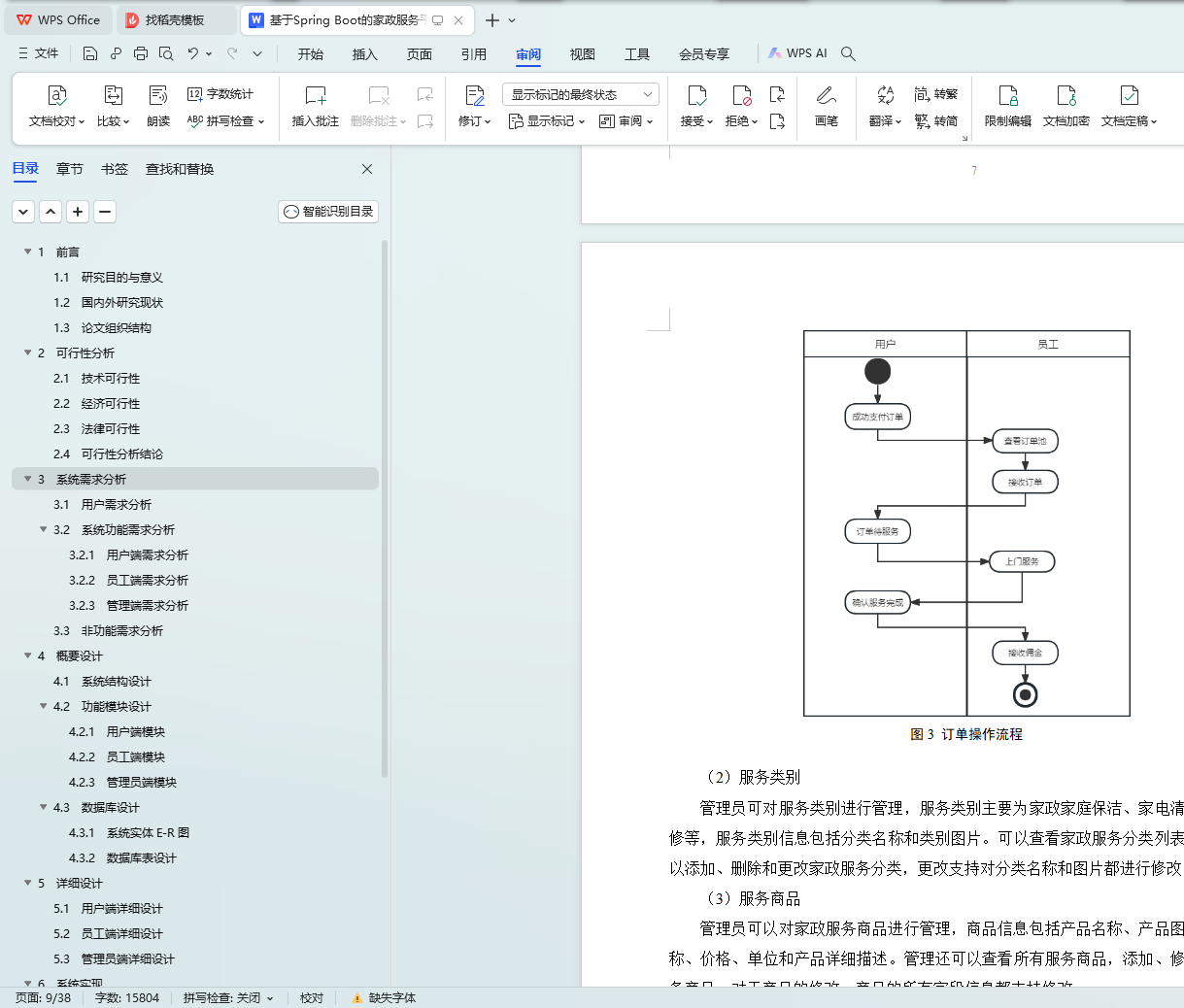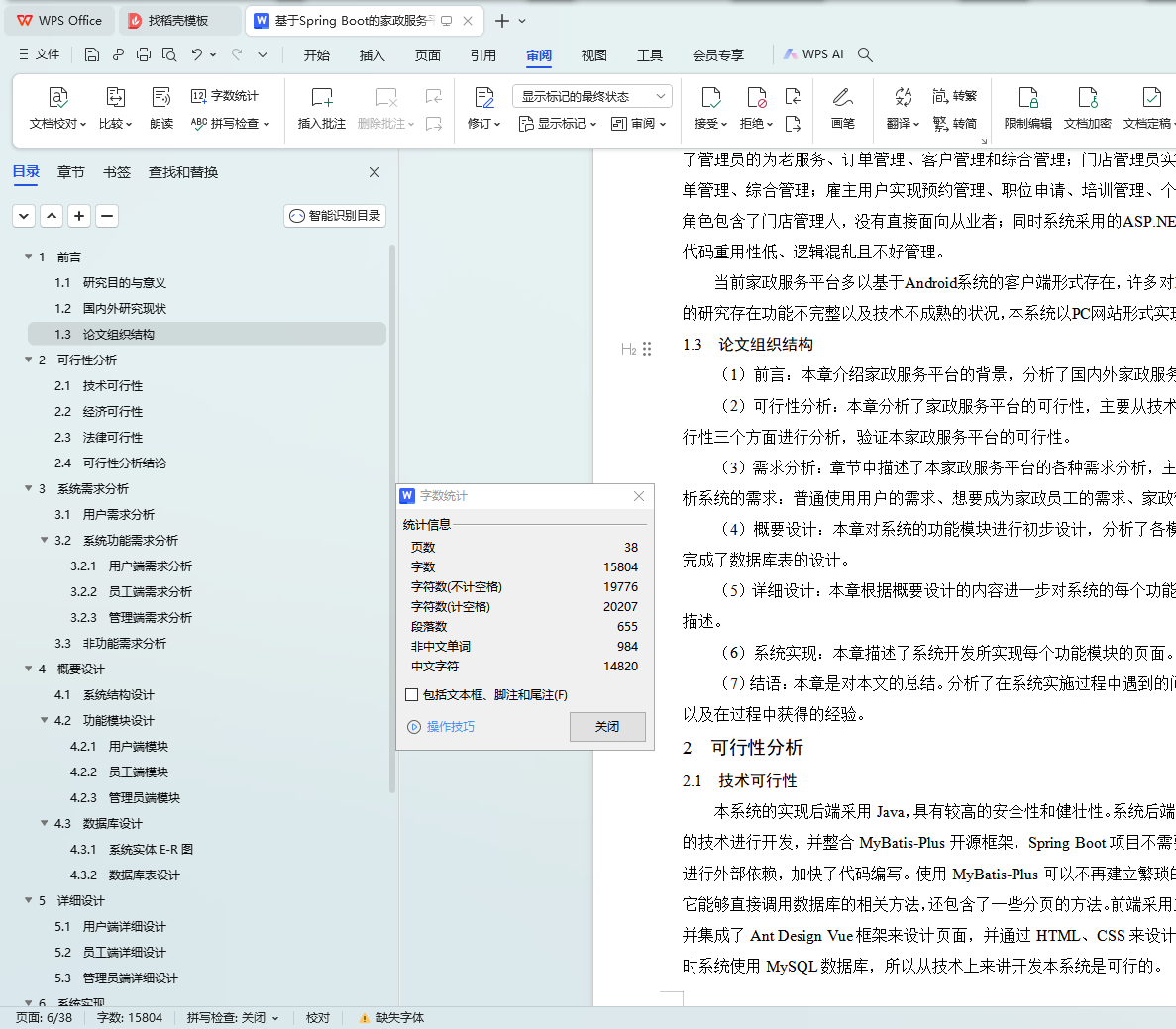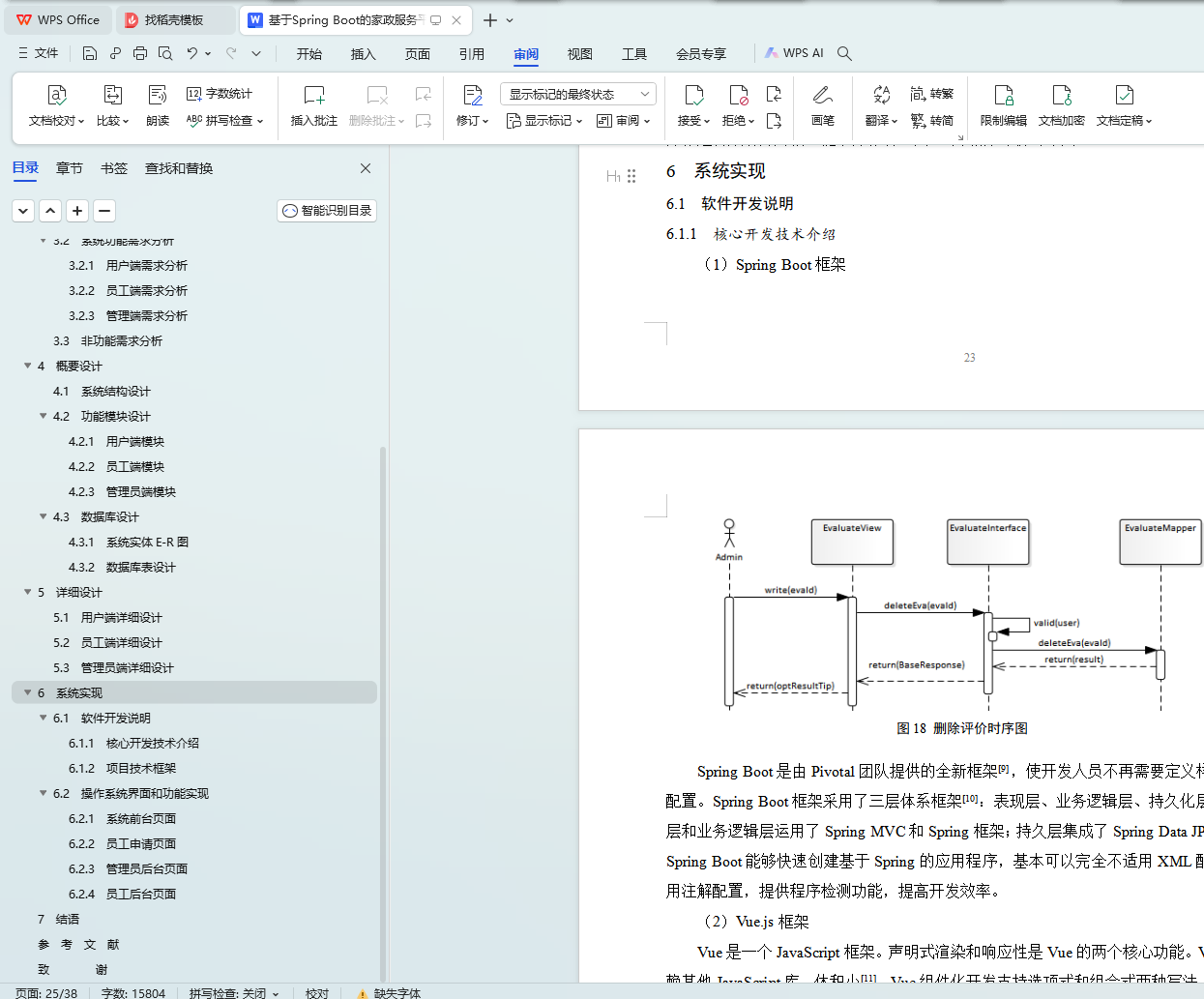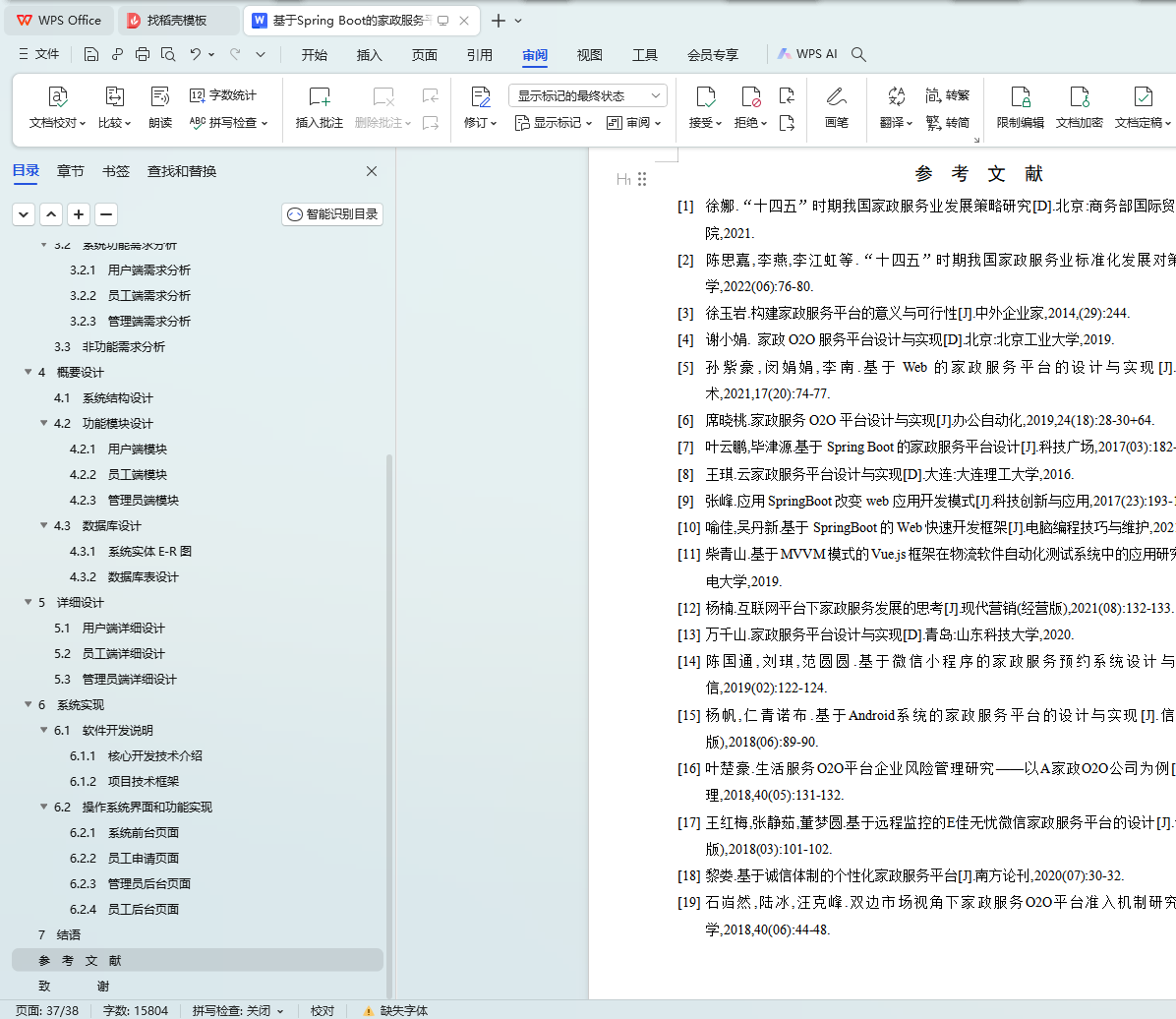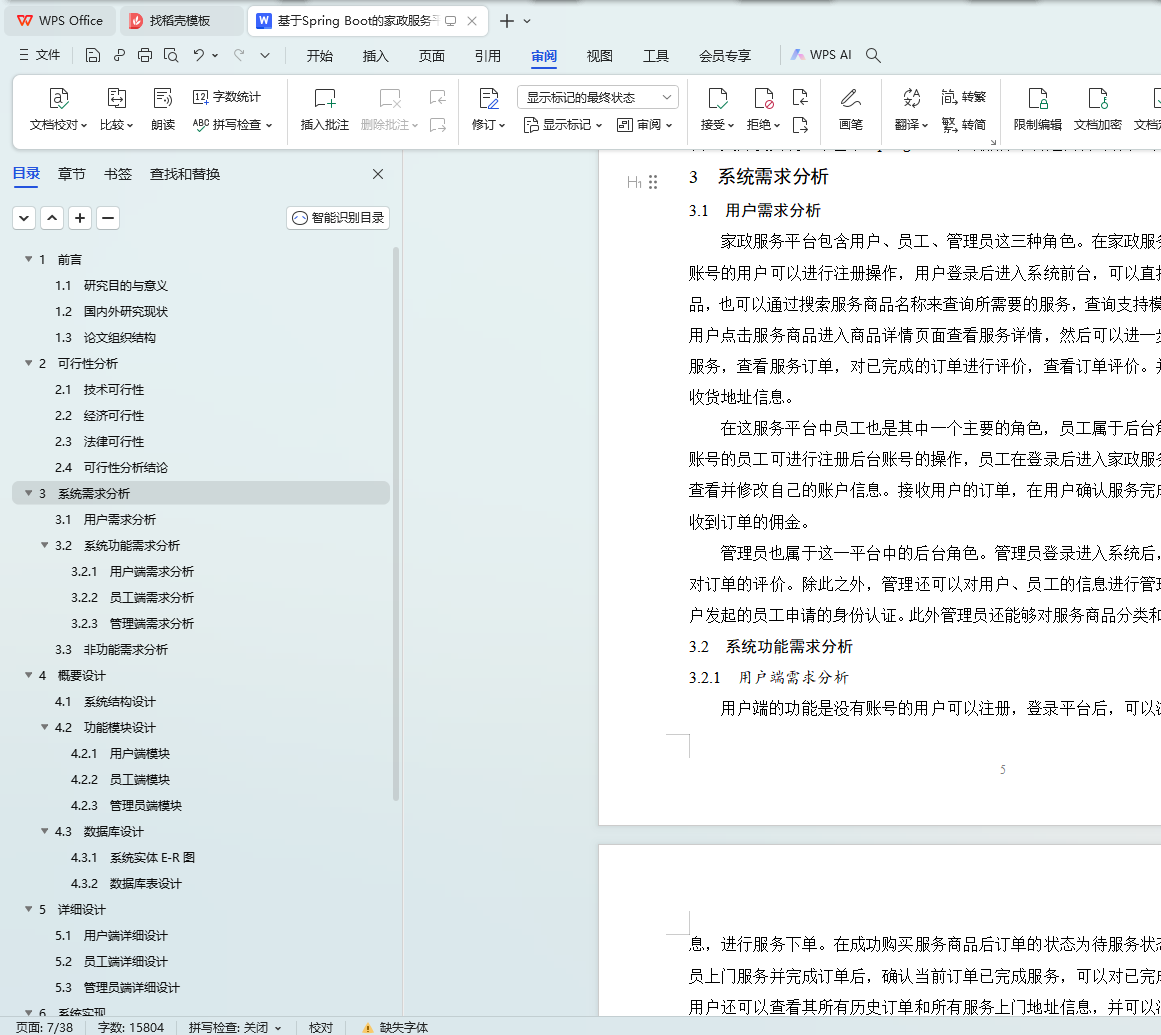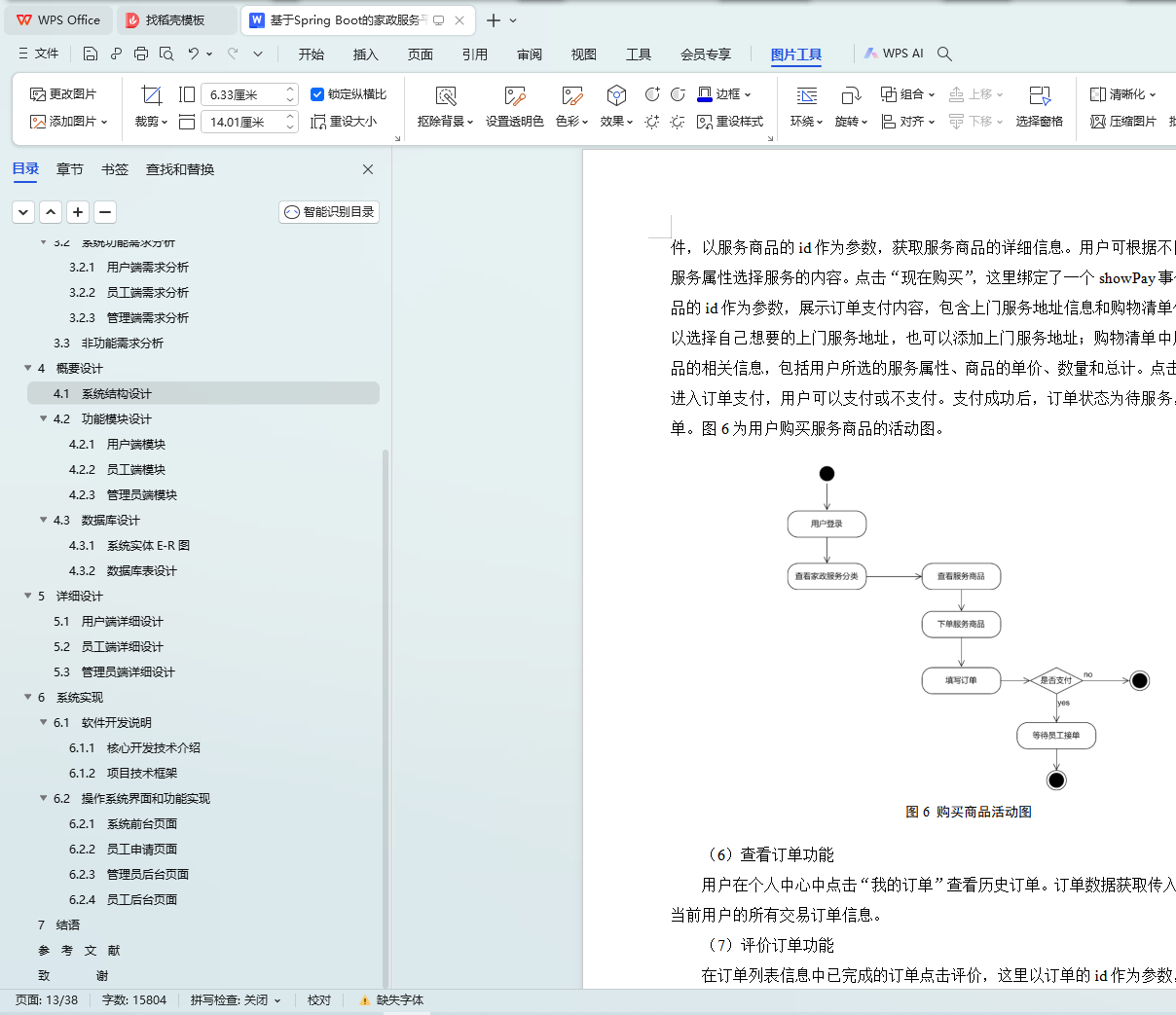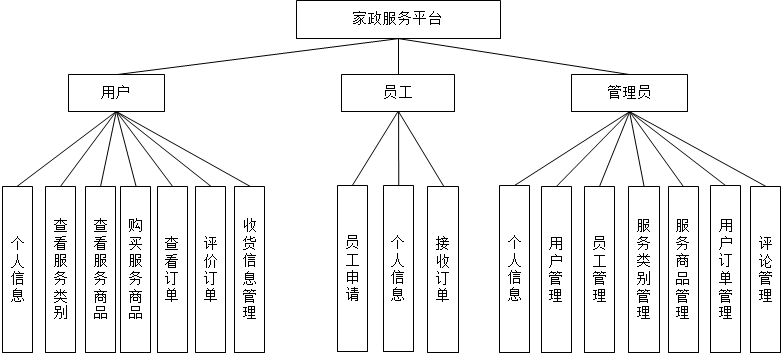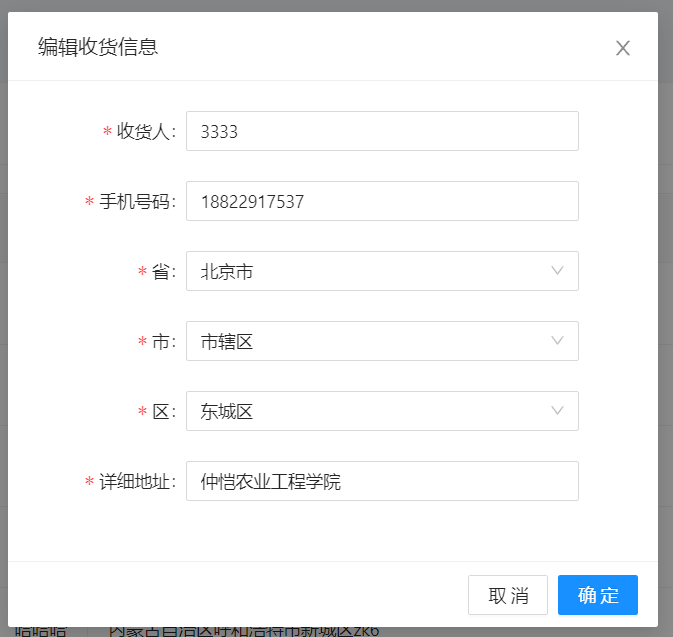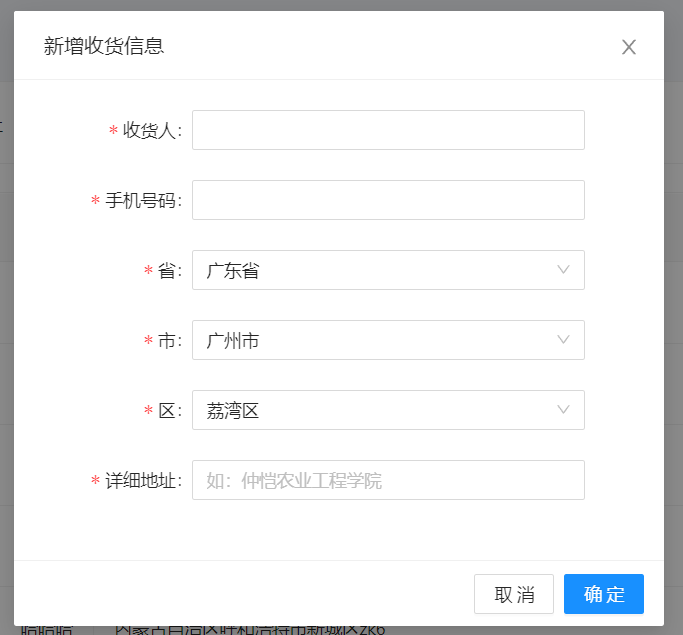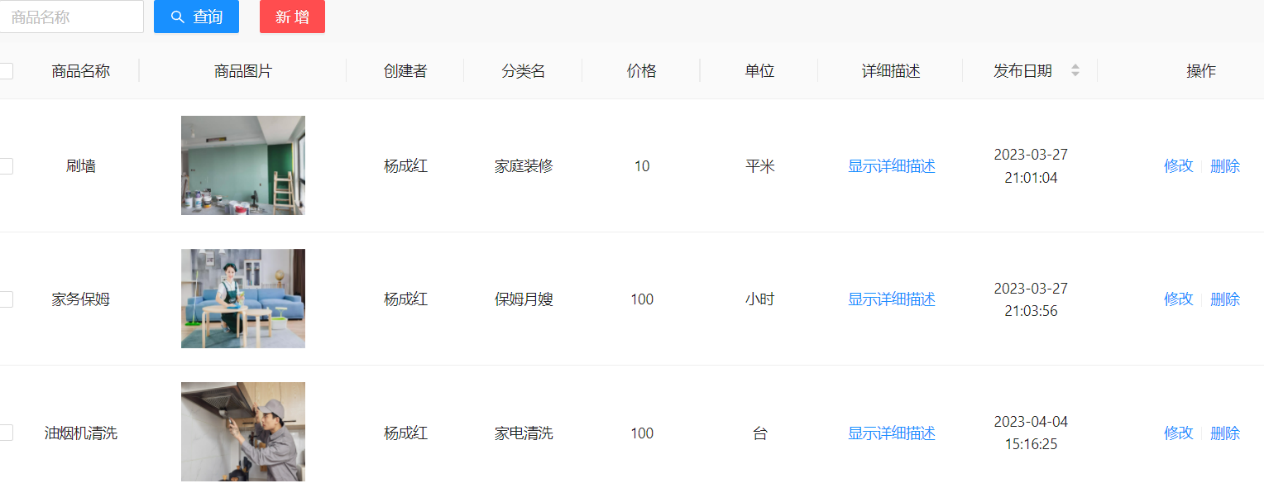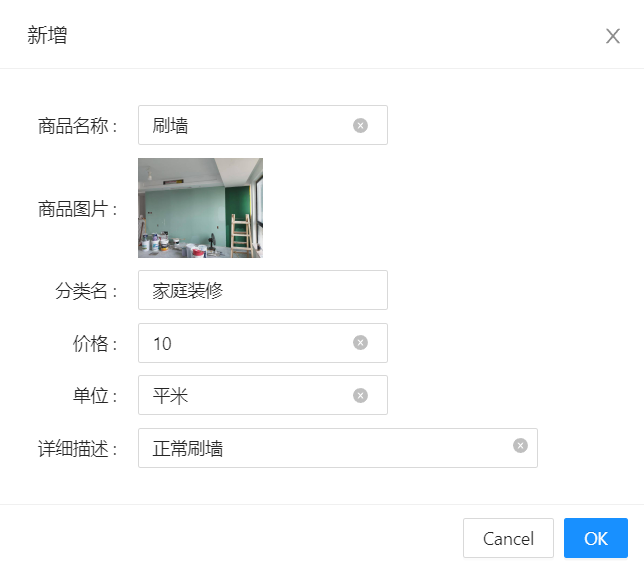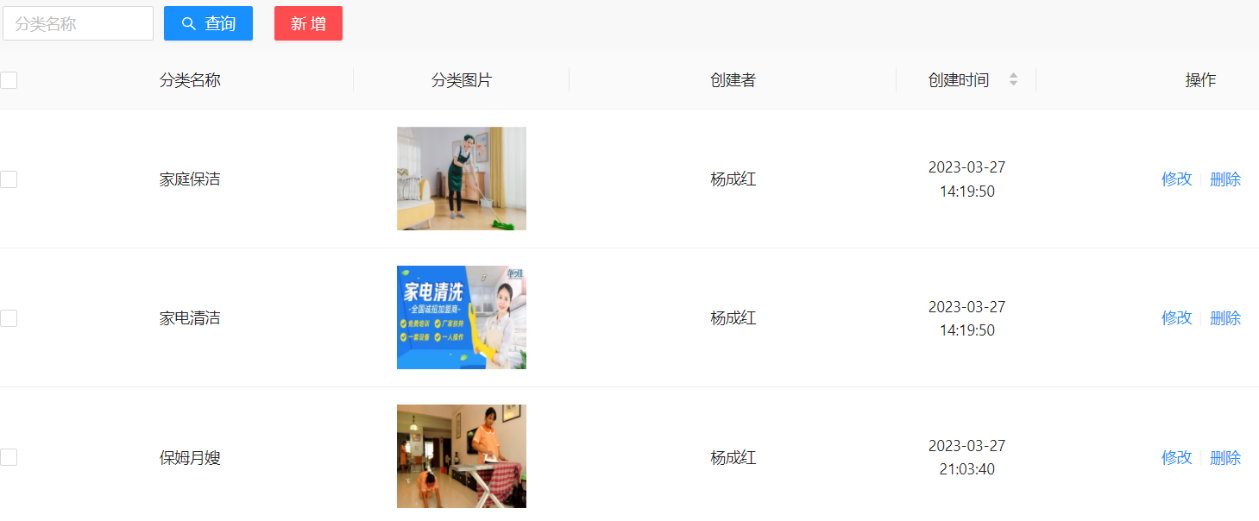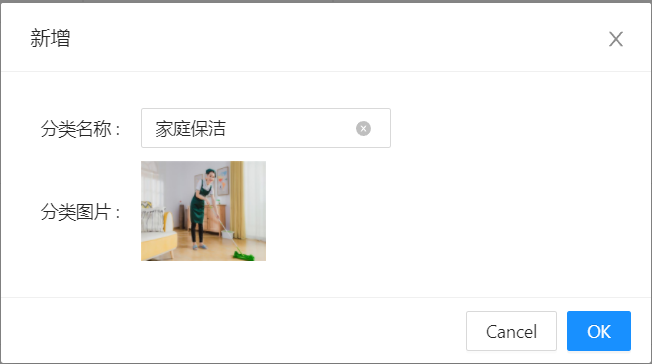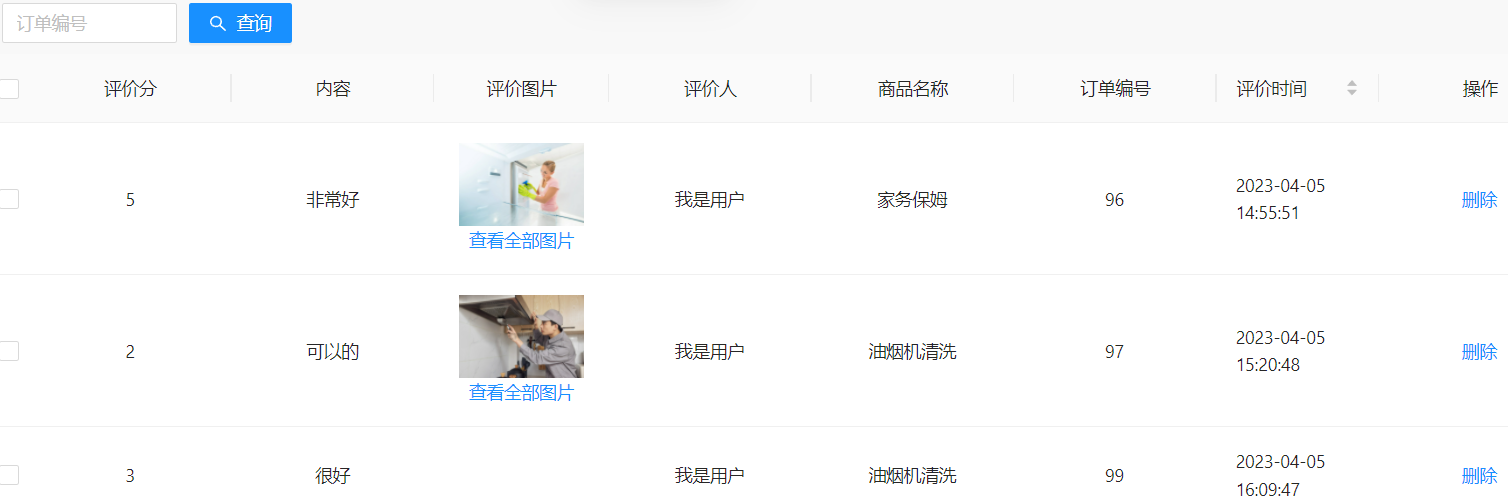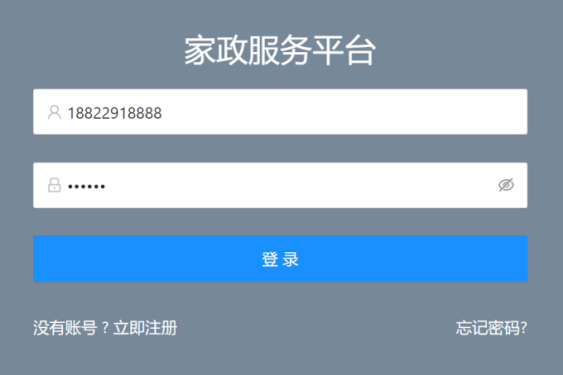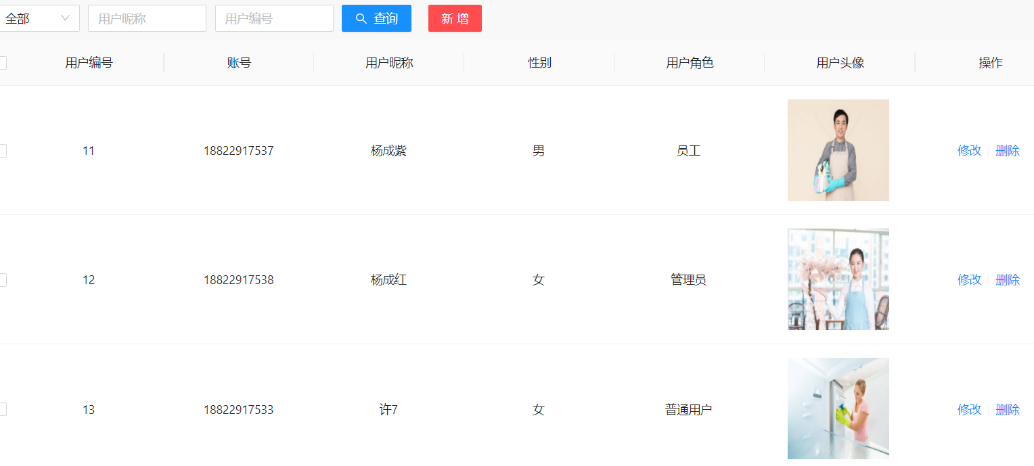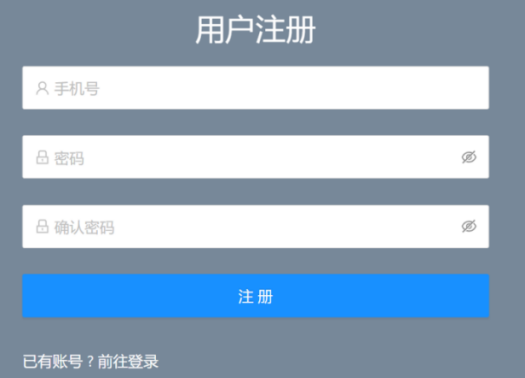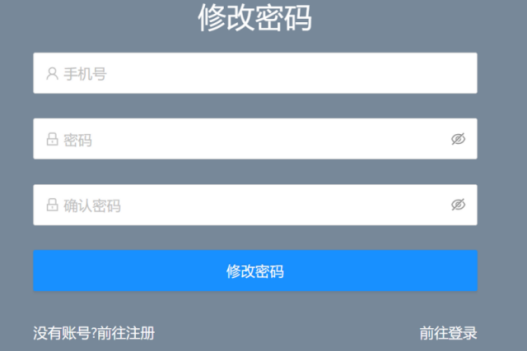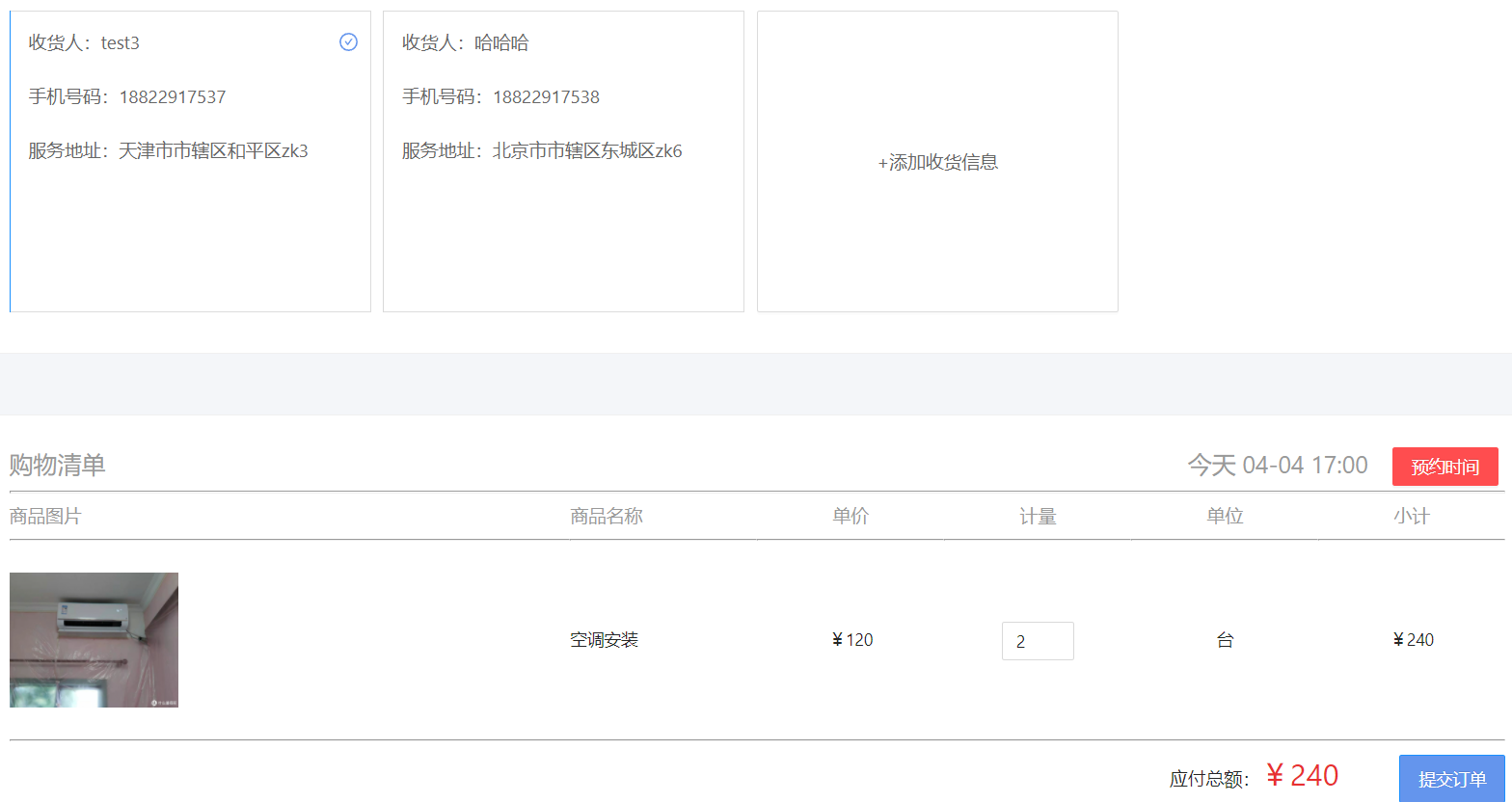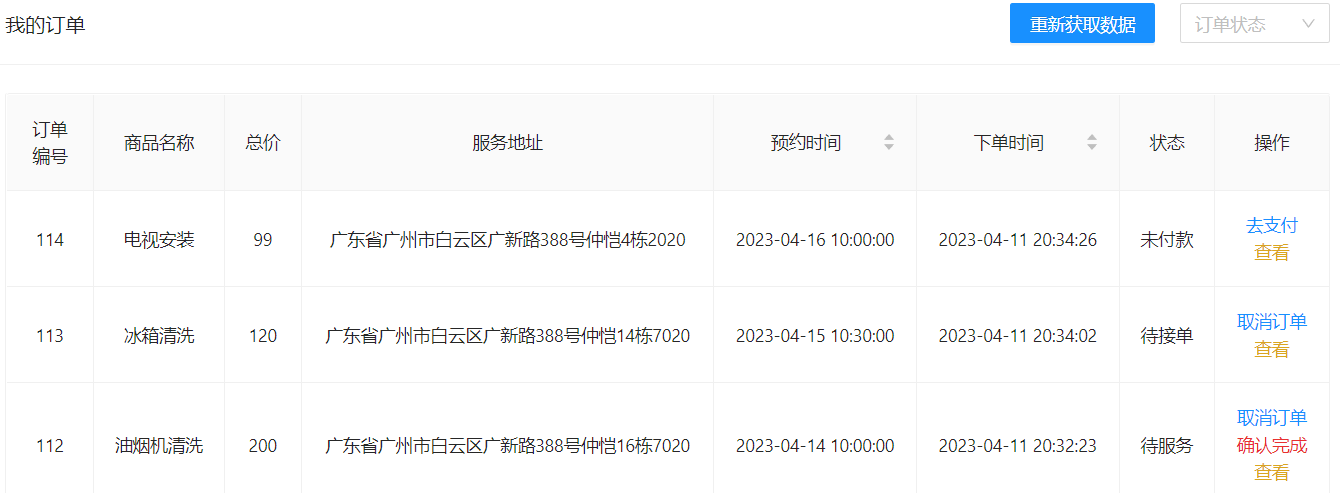摘 要
近年来我国服务业特别是家政服务业正处于大力发展的状况,传统家政中介公司的不便利以及中介公司对员工抽取的利润之高也体现出弊端。为了解决家政服务的便利性问题和减少员工被抽取较高报酬的情况,本文针对当前家政平台的研究及发展现状和所出现的问题进行分析,根据平台的角色需求,对系统整体结构、每个角色功能模块以及数据库进行了设计。论文开发实现了基于Spring Boot的家政服务网站平台,以Spring Boot为后端技术框架,集成了MyBatis-Plus开源框架;前端使用Vue.js框架,集成Ant Design Vue框架来设计系统的页面。系统主要分为用户、员工和管理员三个模块,用户模块主要是服务下单;员工模块主要是针对用户的下单进行接单,完成上门服务,接收订单佣金;管理员模块主要是用户、员工管理及相关服务类别和商品的管理。
关键词:家政服务平台;Spring Boot;MyBatis-Plus;Vue.js
Abstract
In recent years, Chinese service industry, especially domestic service industry, is developing vigorously. The disadvantages of traditional domestic service agency are also reflected in the inconveniences of traditional domestic service agency and the high profit drawn by the agency. In order to solve the convenience problem of housekeeping service and reduce the situation of employees being extracted from higher remuneration, this paper analyzes the current research and development status and problems of the housekeeping platform, and designs the overall structure of the system, functional modules of each role and database according to the role requirements of the platform. In this paper, a housekeeping service website platform based on Spring Boot is developed and implemented. With Spring Boot as the back-end technical framework, it integrates the MyBatis-Plus open source framework. The front-end uses vue.js framework and integrates Ant Design Vue framework to design the system's pages. The system is mainly divided into three modules: user, employee and administrator. The user module is mainly to place orders for services. The staff module is mainly for users to place orders to receive orders, complete on-site service, receive orders commission; The administrator module mainly focuses on the management of users, employees and related service categories and commodities.
Keywords: Housekeeping service platform; Spring Boot; MyBatis-Plus; Vue.js
目 录
1前言
1.1 研究目的与意义
1.2 国内外研究现状
1.3 论文组织结构
2可行性分析
2.1 技术可行性
2.2 经济可行性
2.3 法律可行性
2.4 可行性分析结论
3系统需求分析
3.1 用户需求分析
3.2 系统功能需求分析
3.2.1 用户端需求分析
3.2.2 员工端需求分析
3.2.3 管理端需求分析
3.3 非功能需求分析
4概要设计
4.1 系统结构设计
4.2 功能模块设计
4.2.1 用户端模块
4.2.2 员工端模块
4.2.3 管理员端模块
4.3 数据库设计
4.3.1 系统实体E-R图
4.3.2 数据库表设计
5详细设计
5.1 用户端详细设计
5.2 员工端详细设计
5.3 管理员端详细设计
6系统实现
6.1 软件开发说明
6.1.1 核心开发技术介绍
6.1.2 项目技术框架
6.2 操作系统界面和功能实现
6.2.1 系统前台页面
6.2.2 员工申请页面
6.2.3 管理员后台页面
6.2.4 员工后台页面
7结语
参考文献
致谢
